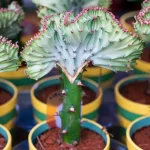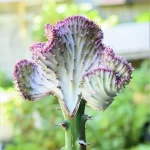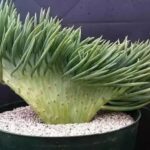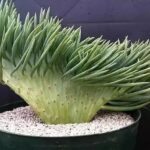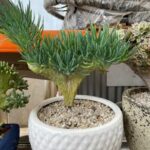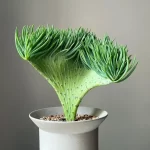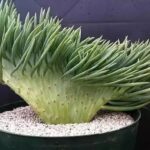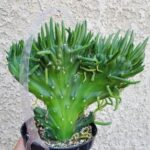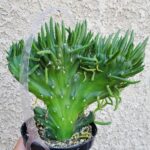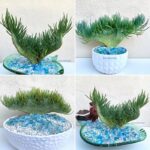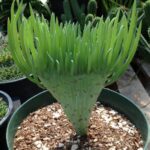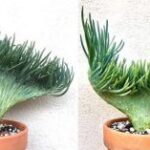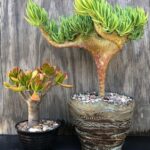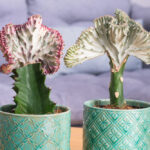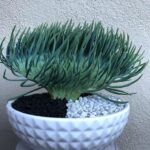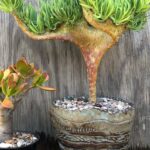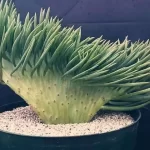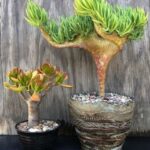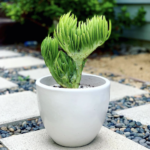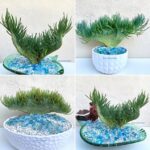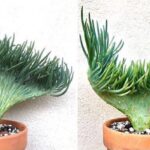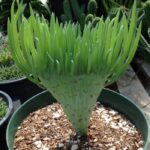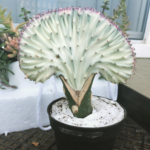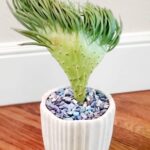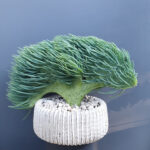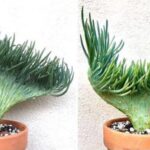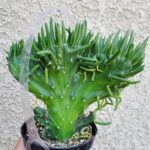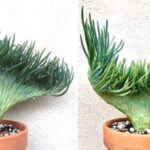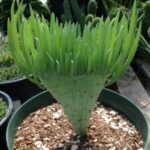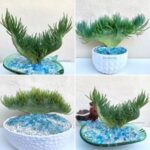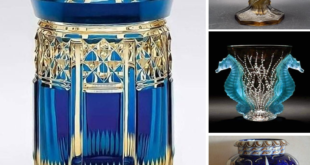
Mermaid Succulents or Crested Senecio vitalis and Euphorbia lactea “Cristata” owe their common names to their appearance. This unique plant looks like a mermaid’s tail. Read on to learn more about this interesting succulent.
Succulent Mermaid Tail Plant Information
You may not be familiar with crested plants in general and what it means. Crested succulents are unusual and therefore more valuable. A plant acquires a comb through a process called fasciation, commonly seen in flowers. In succulents, this is an “abnormal flattening of the stems.”
If you look closely at a crested plant, you will notice that the stem is flattened along the growing points. This causes the plant’s emerging foliage to be short and swollen. The stems appear to be fused together at the bottom and spread out at the top, creating the crested plant appearance. The mermaid tail succulent gets its crest from the distorted shoots created by this process.
If you absolutely must have one, as many of us decide when we see one for the first time, buy one that is already growing. While the mermaid cactus succulent can grow from seeds, there is no guarantee that it will bear a comb that gives it its unique appearance. Even though the plants often have a crest, there is no guarantee unless you see this feature when purchasing.
Without the crest mutation, you will receive either a normal Blue Chalk Plant (Senecio vitalis) or a Dragon Bone Plant (Euphorbia lactea). When purchasing, check the botanical name on the label to make sure which plant you have. Fortunately, both plants require the same care and should therefore grow vigorously under the same conditions.
Mermaid Succulent Care
The blue-green foliage is the attraction of this interesting crested plant, with the Senecio type being spinier and the Euphorbia being serpentine and fringed with coral (which also leads to its common name, coral cactus). The exotic succulent adds a touch of the tropics to your home or any place it is placed. This easy-care succulent is suitable for growing indoors and outdoors, except where temperatures get too cold.
When growing mermaid tail succulents, regardless of the variety you have, start with gritty, well-drained soil in a container with a drainage hole. This provides the correct planting medium for the mermaid tail. Caring for this plant includes acclimating it to a sunny location outdoors or to a bright or partially sunny area indoors.
Limited watering is required for this succulent. Allow the soil to dry thoroughly before watering again. As with many succulents, too much water can cause root rot, especially if water is left around the roots. The right soil promotes water flow. Also, do not leave the pot sitting in a saucer of water. How often you need to water depends on the conditions.
 home decor trends
home decor trends
